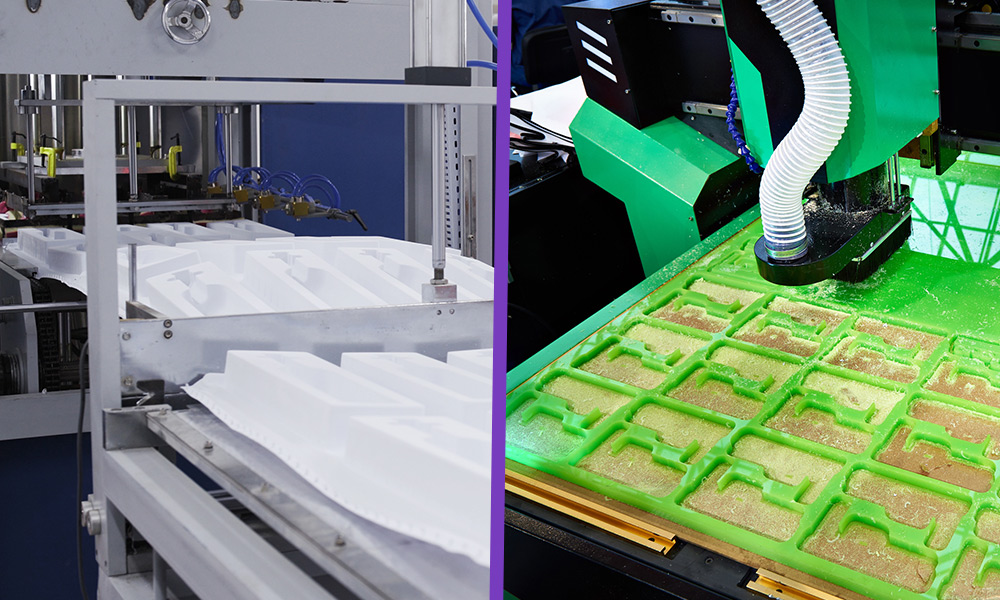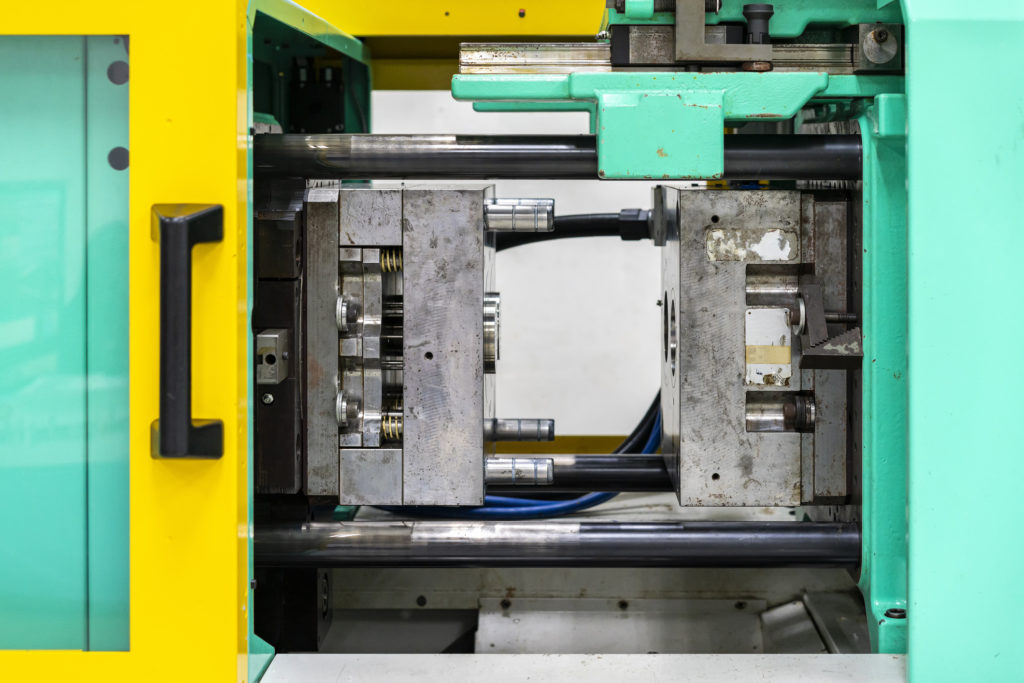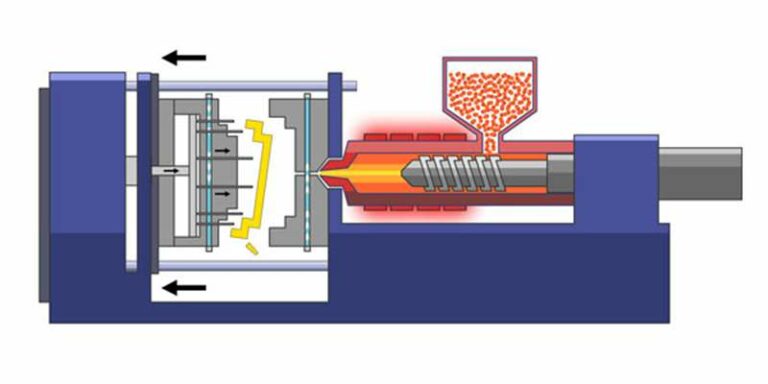Comprehending the Basics of Plastic Injection Molding Procedures
Plastic injection molding works as a foundation of modern production, giving a methodical technique to generating intricate components with accuracy. This procedure not just incorporates the fundamental actions of melting and injecting materials right into mold and mildews yet likewise involves a nuanced understanding of different affecting elements, such as temperature level and pressure. As industries significantly demand effectiveness and quality, the details of this technique come to be extra vital. Discovering these vital components can expose exactly how even small modifications can cause substantial renovations in production end results, raising concerns about the possibility for innovation in this recognized process.
What Is Plastic Shot Molding?
Plastic injection molding is a widely used manufacturing procedure that changes thermoplastic and thermosetting products right into accurate and intricate shapes. This method is preferred for its capacity to create high quantities of the same get rid of remarkable precision, making it a crucial technique in numerous markets, consisting of automobile, durable goods, and clinical devices.
The process entails thawing the chosen plastic material and injecting it right into a mold under high pressure. The mold, developed to the specifications of the wanted part, allows the liquified plastic to materialize as it solidifies and cools. Once the product has set, the mold and mildew is opened, and the completed part is ejected.
Plastic shot molding supplies several benefits, consisting of decreased waste, consistency in production, and the ability to integrate complex layouts that might be testing with various other manufacturing techniques. Furthermore, it sustains a broad variety of products, each giving special homes that can be customized for details applications. As sectors proceed to innovate, plastic injection molding stays at the center, making it possible for the growth of innovative products that satisfy advancing customer demands.
The Shot Molding Process
The injection molding procedure is an innovative method that includes several crucial stages to produce premium plastic parts. Plastic pellets are fed right into a heated barrel where they are thawed right into a viscous liquid. This molten plastic is after that injected under high stress right into a precision-engineered mold and mildew, which forms the material into the wanted form.
When the mold is filled up, the plastic is enabled to cool down and solidify, taking the form of the mold tooth cavity. Air conditioning time is essential, as it influences the cycle time and the final residential or commercial properties of the shaped part. After adequate air conditioning, the mold opens up, and the finished element is ejected utilizing ejector pins.

Products Utilized in Injection Molding
Numerous materials can be used in the injection molding procedure, each offering unique residential or commercial properties that deal with certain applications. One of the most frequently utilized products include thermoplastics, thermosetting plastics, and elastomers.

Thermosetting plastics, like epoxy and phenolic resins, undertake a chemical adjustment throughout the curing procedure, causing a stiff, inflexible structure. These products are excellent for applications calling for high warmth resistance and structural stability, often used in electrical insulators and automobile parts.
Elastomers, consisting of silicone and rubber-based products, give flexibility and resilience. Their special buildings make them suitable for applications that require elasticity, such as seals and gaskets.
In addition, specialized products like bio-based plastics and composites are obtaining traction for their ecological advantages and enhanced efficiency qualities, widening the extent of shot molding applications in different markets. Understanding the buildings of these products is critical this link for picking the see this page appropriate type for specific tasks.
Advantages of Shot Molding
Shot molding attracts attention as an extremely efficient manufacturing procedure that provides various benefits for producing complicated components with accuracy. Among the most significant benefits is the ability to create intricate styles that would be difficult or tough to accomplish with various other approaches (Plastic Injection Molding). The procedure enables limited resistances and thorough features, ensuring high-quality elements
Additionally, shot molding is understood for its rapid production capabilities, making it an excellent choice for high-volume production. As soon as the mold and mildew is produced, parts can be created rapidly, decreasing lead times and boosting general efficiency. This performance not only decreases manufacturing costs yet also gives a competitive side in the market.
The versatility of products used in injection molding even more boosts its allure. A variety of thermoplastics and thermosetting polymers can be utilized, enabling suppliers to pick materials that best satisfy their certain needs, consisting of warmth, flexibility, and strength resistance.
In addition, the procedure minimizes waste, as excess material can commonly be recycled and reused. This sustainability facet contributes to a reduced ecological influence, making injection molding a responsible production site option. On the whole, the advantages of injection molding make it a recommended approach for lots of industries.
Factors Impacting Item Quality
While many aspects can affect product top quality in shot molding, comprehending these elements is essential for accomplishing optimal outcomes. Key aspects include material selection, processing parameters, and mold style.
Product option plays an important function, as different polymers exhibit one-of-a-kind buildings that affect flowability, strength, and thermal stability. Insufficient product option can result in flaws such as bending or incomplete filling.
Processing parameters, consisting of cycle, temperature level, and stress time, have to be carefully controlled. Variants in these setups can result in inconsistencies in component measurements and surface area finish. For instance, excessively heats may create deterioration of the polymer, while inadequate stress can cause brief shots.
Mold design is equally vital, as it establishes the flow of the molten plastic and the cooling procedure. Badly created mold and mildews may lead to irregular air conditioning rates, causing residual anxieties and dimensional mistakes.

Final Thought
In conclusion, plastic injection molding serves as a crucial manufacturing procedure that enables the efficient production of premium parts. Proficiency of the injection molding procedure, including the understanding of products and the impact of various variables on product top quality, is necessary for accomplishing optimum results. The benefits of this technique, such as cost-effectiveness and layout adaptability, more emphasize its relevance throughout several industries, strengthening its status as a favored option for high-volume manufacturing.
Plastic shot molding offers as a keystone of modern-day manufacturing, giving a systematic strategy to generating intricate parts with precision.Plastic shot molding supplies numerous advantages, including lowered waste, consistency in manufacturing, and the ability to integrate complex layouts that may be testing with other making methods (Plastic Injection Molding). As sectors proceed to introduce, plastic injection molding continues to be at the leading edge, allowing the advancement of innovative items that meet evolving customer needs
The injection molding procedure is an innovative technique that includes several vital phases to produce top notch plastic elements.In verdict, plastic injection molding serves as an important manufacturing process that makes it possible for the reliable production of premium components.